|
|
Lightning
What is Lightning?
Lightning is an electrical discharge from a thunderstorm known as a cumulonimbus cloud. Lightning bolts can reach from one cloud to another - cloud to cloud or from the cloud to the ground. About 75% of lightning bolts are from cloud to cloud. The reason for this is because air is a poor conducter of electricity. That makes it hard for a lightning bolt to reach the ground.
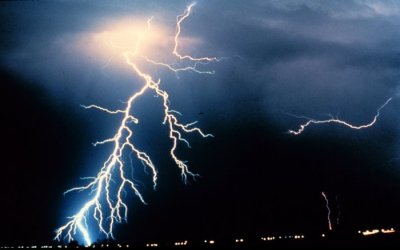 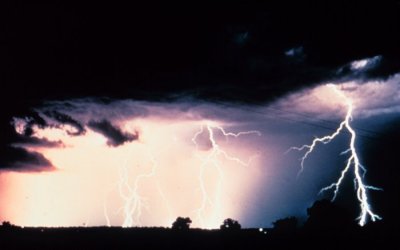
What causes lightning?
As a thundercloud develops, it is made up of many up and down drafts. Supercooled water droplets are carried high aloft to the top of the cloud and form into ice crystals. As the ascending water droplets collide with some of the ice crystals and graupel, electrons are broken off of the decending particles. Because of this, the bottom of the thunderstorm becomes negatively charged and the top positively charged. A pool of positively charged particles shadows the thunderstorm's movement. These positive charges will move up high objects like trees, buildings, and telephone poles.
A cloud to ground lightning bolt starts as the difference between the postive and negative charges grow. A "stepped leader" drops from the base of the thunderstorm. This is the channel in which the bolt will flow. This happens extremely quickly - in tens of milliseconds. As this channel decends toward the ground, streamers of positve charge move toward this stepped leader. The two meet about 100-300 feet above the ground. This is when the charge flows to the ground and the bright flash is seen.
Thunder is the result of this channel of air being heated rapidly. Lightning may pulse up and down the channel from 1 to as many as 20-30 times.
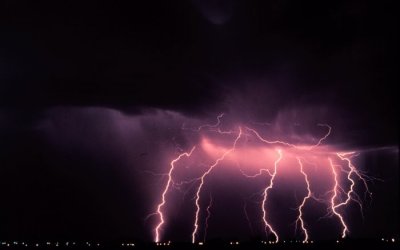 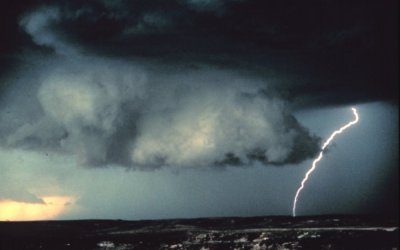
Lightning Facts
Heat Lightning is simply the reflection of lightning off of clouds from a storm many miles away.
You can only hear thunder from about 10 miles away at the most.
You can tell how close a lightning strike is by counting from when you see the lightning bolt to when you hear the thunder. Calculate one mile distance for every five seconds.
The temperature of a lightning bolt ranges from 15,000° - 60,000° F or roughly up to about five times the temperature of the surface of the sun!
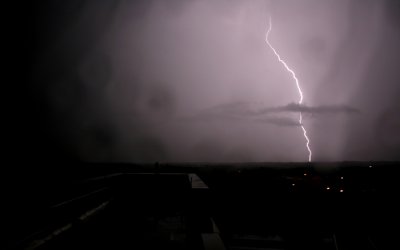 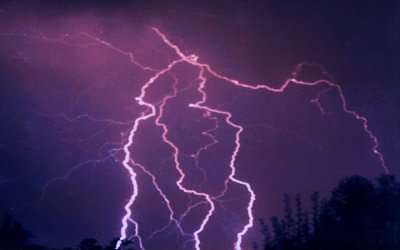
Lightning Safety
A sturdy building is the safest place to be during a thunderstorm. Cars, not including convertibles are usually safe as well.
If indoors, stay away from windows, electrical equiptment, and plumbing.
If caught outside and you are unable to get to a building or car... stay away from hilltops, open fields, or lone standing trees. If your are playing sports, leave the field immediately if thunder is heard. Activities should not be started for 30 minutes after the last rumble of thunder is heard.
If boating, try to get back to harbor. Boats with cabins offer some protection, especially if they have been fitted with a lightning protection system.
Keep a NOAA weather radio with you to keep up with the latest weather bulletins.
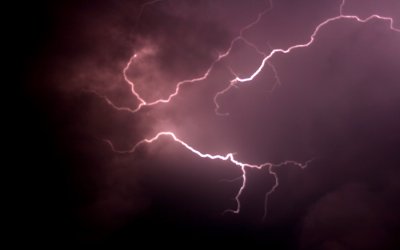 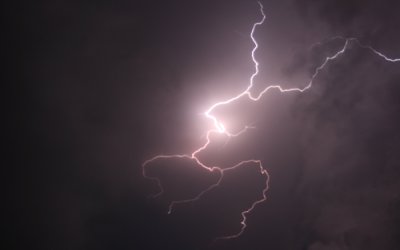
Explore more types of weather. Pictures courtesy of NOAA.
|
|
|